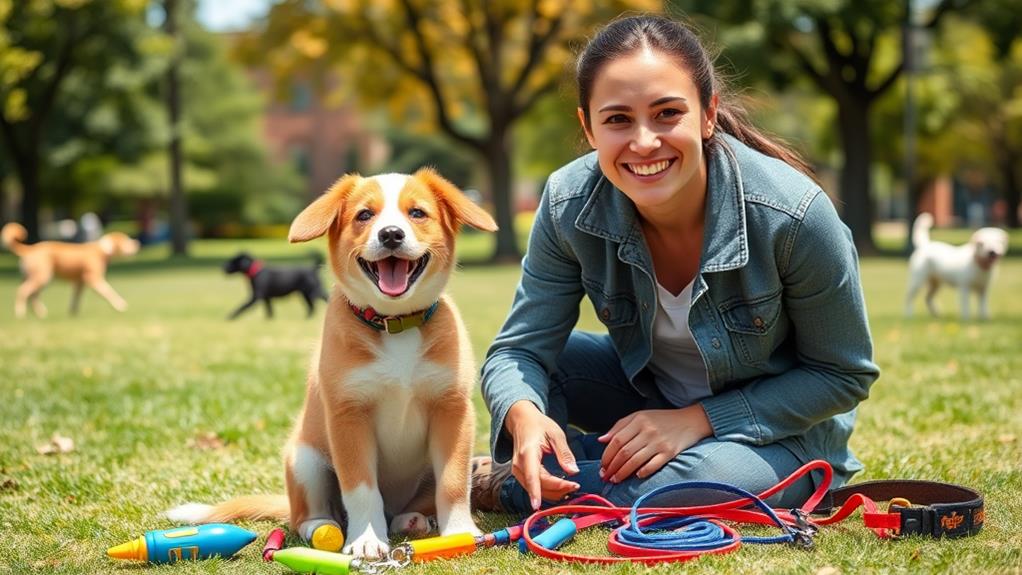Effective dog training begins with mastering basic commands, which lays a solid foundation for your new pet. Use positive reinforcement, rewarding good behavior to encourage repeat actions. Establishing a consistent routine helps your dog feel secure and learn faster. Keep training sessions short to avoid distraction and maintain interest. Early socialization is vital, exposing your pup to various environments and people to build confidence. Remember to be patient and consistent, as every dog learns at their own pace. If challenges arise, seeking help can make a world of difference. There's so much more to uncover about successful training strategies!
Start With Basic Commands
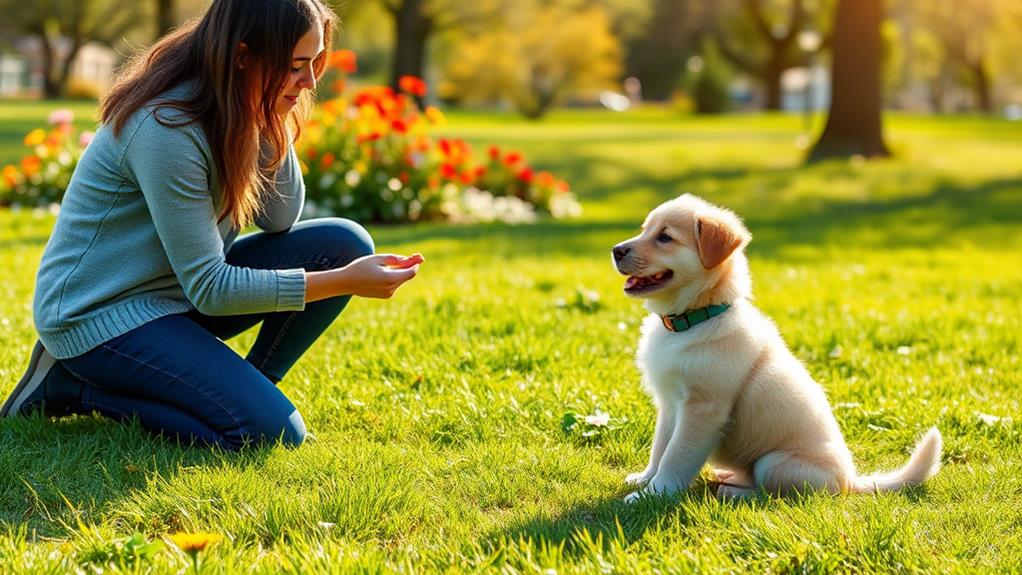
When you first bring a dog into your home, mastering basic commands is like building a strong foundation for a house. These commands, such as "sit," "stay," "come," and "down," not only help with communication but also establish a sense of order. Start by picking a quiet space where distractions are minimal. This way, your dog can focus solely on you.
Use clear, consistent cues for each command. For example, when teaching "sit," say the word firmly while gently pushing your dog's rear down. Once they understand the command, practice regularly to reinforce their learning. Keep training sessions short—about 5 to 10 minutes—so your dog remains engaged and doesn't lose interest.
Be patient; some dogs may take longer to grasp commands than others. It's crucial to remain calm and encouraging throughout the process. You'll soon find that mastering these basics will make future training easier and help strengthen your bond. So, grab some treats, get ready to practice, and enjoy the journey of teaching your furry friend these essential skills. It's the first step in creating a well-behaved companion.
Use Positive Reinforcement
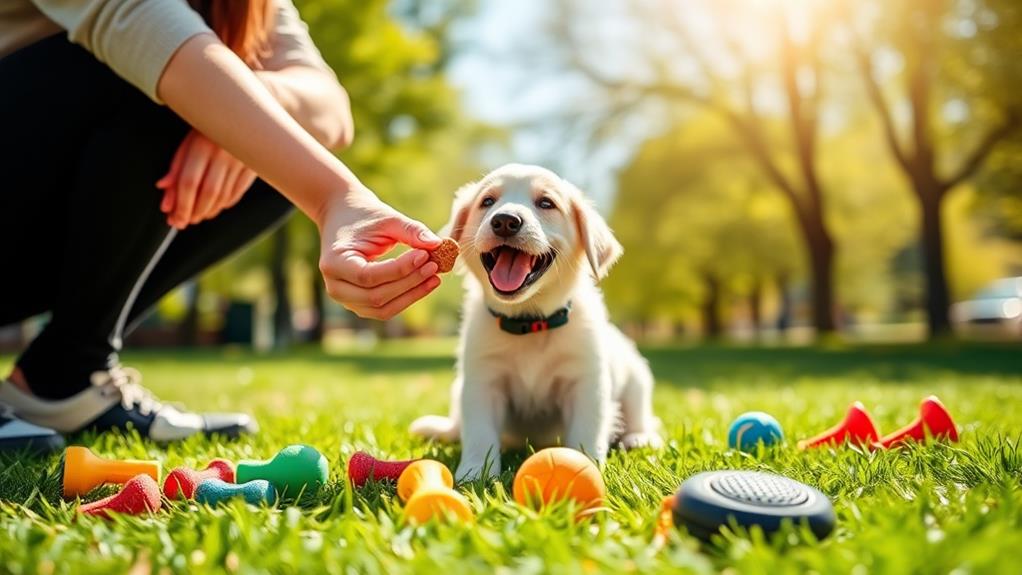
Positive reinforcement is a powerful tool in dog training that can transform your pup's behavior. This method involves rewarding your dog for good behavior, which encourages them to repeat that behavior in the future. Instead of focusing on punishment for mistakes, you'll create a positive learning environment that fosters trust and strengthens your bond with your pet.
When your dog follows a command, like "sit" or "stay," praise them enthusiastically. Use treats, toys, or verbal praise as rewards—whatever motivates your pup the most. Be consistent; reward them immediately after they perform the desired action to reinforce the connection between the behavior and the reward.
It's important to keep training sessions short and engaging. If your pup seems distracted or loses interest, take a break and try again later. Always remember to be patient; every dog learns at their own pace.
Establish a Routine
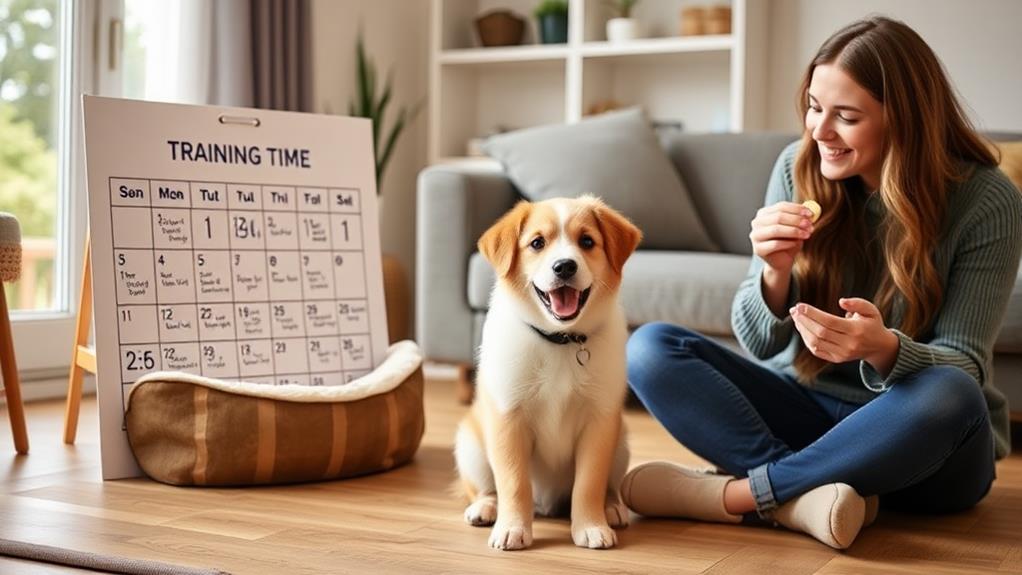
Establishing a routine is pivotal for your dog's training and overall well-being, as it helps them understand what to expect throughout the day. By setting a consistent schedule, you create a sense of security for your pup, making them more receptive to learning. Aim for regular feeding times, exercise, and training sessions. This predictability not only helps your dog feel comfortable but also reinforces desired behaviors.
Here's a simple routine you can follow:
| Time | Activity |
|---|---|
| 7:00 AM | Morning walk |
| 8:00 AM | Breakfast |
| 12:00 PM | Midday playtime |
| 6:00 PM | Evening training |
Feel free to adjust the times based on your schedule, but try to keep activities consistent each day. Remember, dogs thrive on routine, and this structure helps them learn faster. You'll notice that a well-established routine can lead to a happier, more well-behaved pet. So, stick to your schedule and enjoy the bonding time you create with your furry friend!
Keep Training Sessions Short
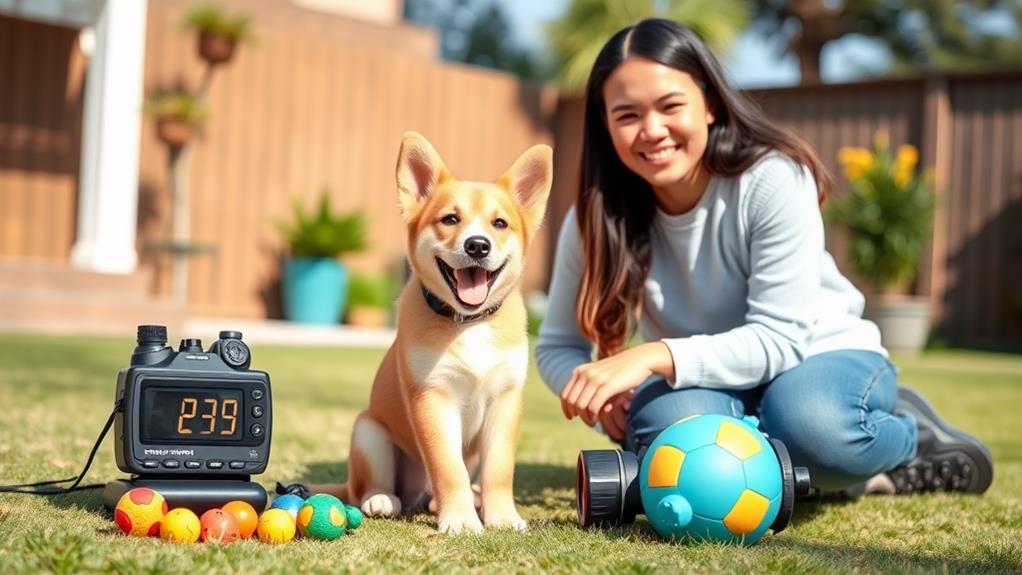
Training sessions can be a game changer for your dog's learning experience, but keeping them short is crucial. Dogs have limited attention spans, and lengthy sessions can lead to frustration for both you and your pet. Aim for sessions that last around 5 to 10 minutes, especially for puppies or younger dogs. This way, your dog stays engaged and retains more information.
Short, focused sessions allow you to work on specific commands or behaviors without overwhelming your dog. Break down training into manageable chunks, focusing on one skill at a time. If your dog seems restless or distracted, it's a sign to wrap things up. Ending on a positive note reinforces learning and keeps your dog enthusiastic for the next session.
Incorporate multiple short sessions throughout the day instead of one long session. This not only helps reinforce what they've learned but also makes training a regular part of your routine. Remember to use plenty of praise and rewards, making each session enjoyable. Keeping it light and fun will guarantee your dog looks forward to training, setting the stage for a well-behaved companion in the long run.
Socialize Your Dog Early

Early socialization is essential for your dog's development and well-being. By exposing your puppy to various environments, people, and other animals, you help them build confidence and reduce anxiety. Start this process as soon as you bring your puppy home, ideally before they reach 16 weeks old. This timeframe is pivotal, as puppies are particularly receptive to new experiences during this period.
Take your dog to different places—parks, pet-friendly stores, and even your neighbor's house. Introduce them to a variety of people, including kids, adults, and seniors. Encourage positive interactions by rewarding your dog with treats and praise when they remain calm and friendly.
Don't forget about other dogs! Arrange playdates with vaccinated, well-mannered dogs to teach your puppy appropriate social skills. Observe their body language, and be ready to step in if play gets too rough.
Be Patient and Consistent
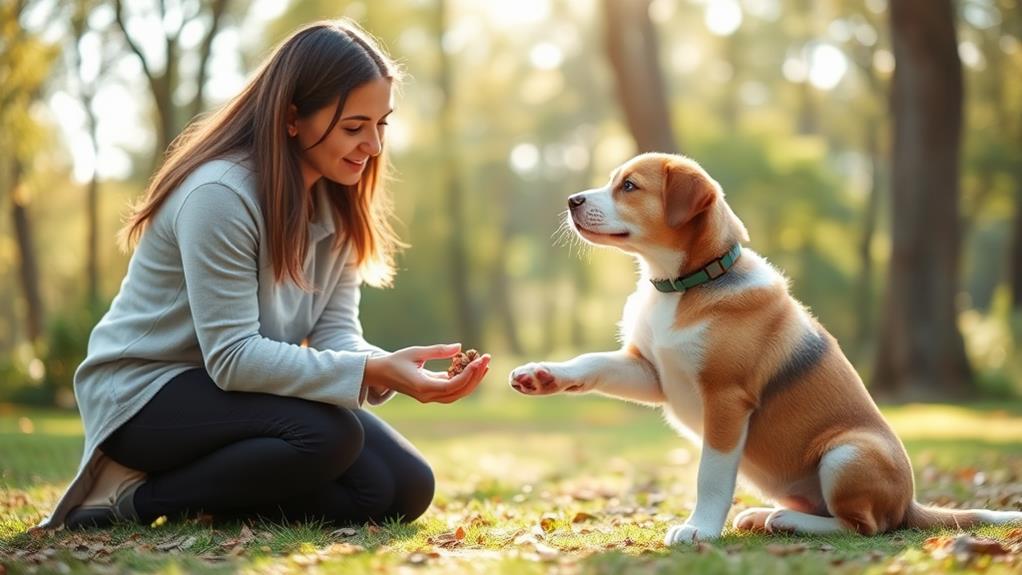
Consistency and patience are essential for effective dog training. When you set rules and expectations, make sure you stick to them every time. Dogs thrive on routine, so if you're inconsistent, it can confuse them and hinder their learning process. For example, if you allow your dog on the couch one day and not the next, they'll struggle to understand what's expected of them.
Patience is equally important. Training your dog is a gradual process, and it's normal for them to take time to grasp new commands or behaviors. Celebrate small victories along the way, and don't get frustrated if your dog doesn't learn as quickly as you'd like. Remember, every dog is unique, and some may need more time than others.
Be prepared for setbacks, too. Your dog might regress or forget commands from time to time. This doesn't mean you've failed; it's simply part of the learning journey. Stay calm and reinforce the training consistently. With your unwavering patience and a steady approach, you'll build a strong bond and create a well-behaved companion. Stick with it, and you'll see the rewards in no time!
Know When to Seek Help
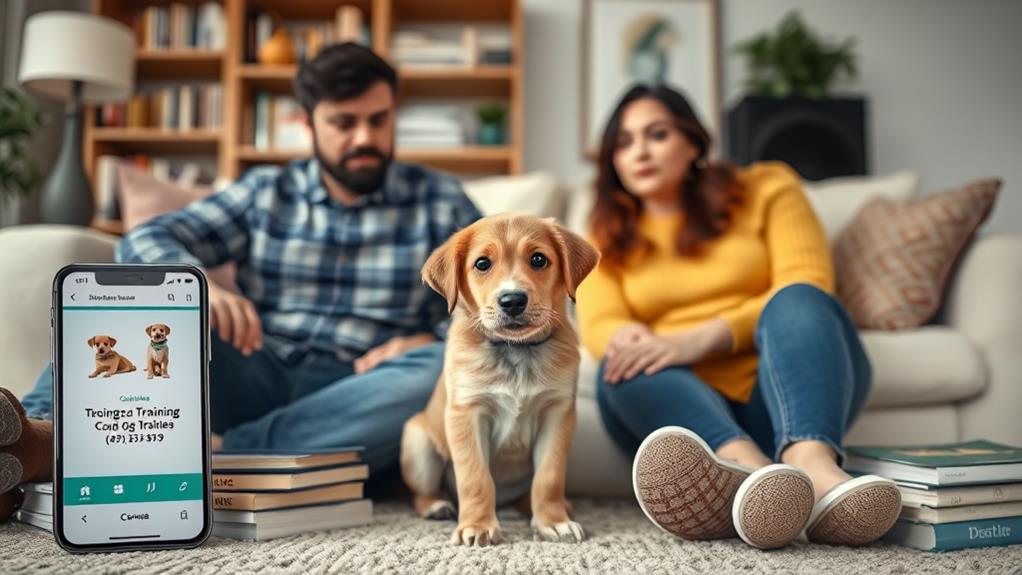
Even with patience and consistency, you might encounter challenges that feel overwhelming. If your dog shows signs of aggression, severe anxiety, or persistent behavioral issues, it's paramount to recognize when to seek help. Ignoring these red flags can lead to bigger problems down the line, not just for your dog, but for your household as well.
Consider reaching out to a professional dog trainer or a certified behaviorist if you find yourself stuck. They can provide the expertise and tools you need to tackle specific issues. Don't hesitate to ask for help; it's a wise move that can save you time and frustration.
Also, look into local training classes. These settings offer structured guidance and socialization opportunities for your dog, which can be invaluable.
Lastly, remember that your vet can also be a resource. If your dog's behavior seems to stem from health issues, it's imperative to rule those out first. By knowing when to seek help, you're not just improving your dog's behavior; you're also enhancing your relationship and ensuring a happy, harmonious environment for everyone involved.
Frequently Asked Questions
What Age Is Best to Start Training My Puppy?
You should start training your puppy as early as eight weeks old. This age allows them to absorb lessons quickly. Consistent, positive reinforcement during this critical period helps shape their behavior and strengthens your bond.
How Can I Correct Unwanted Behaviors Effectively?
To correct unwanted behaviors effectively, you'll want to remain consistent and patient. Use positive reinforcement, redirect their attention, and establish clear boundaries. Remember, it's about teaching them what you expect, not just stopping bad habits.
Are Certain Dog Breeds Easier to Train?
Studies show that breeds like Border Collies and Poodles rank among the smartest, making them easier to train. However, individual temperament matters, so you'll find some surprises in your own dog's learning abilities.
Can I Train My Dog Without Treats?
You can absolutely train your dog without treats! Instead, use praise, toys, or playtime as rewards. Consistency and positive reinforcement will help strengthen your bond and encourage your dog to learn effectively. Enjoy the process!
How Do I Handle Distractions During Training?
When distractions arise during training, stay calm and focused. Use short, engaging sessions to maintain your dog's attention. Gradually introduce distractions, rewarding your pup for maintaining focus and reinforcing positive behaviors consistently.
Conclusion
With these effective training tips, you're well on your way to building a strong bond with your dog. Picture your pup keenly responding to commands, tail wagging in excitement, as you both enjoy the journey together. Remember, patience and consistency are key; think of it as planting seeds that will flourish into a beautiful friendship. If challenges arise, don't hesitate to seek help. Your commitment will transform your new pet into a well-behaved companion, ready for adventures together.

